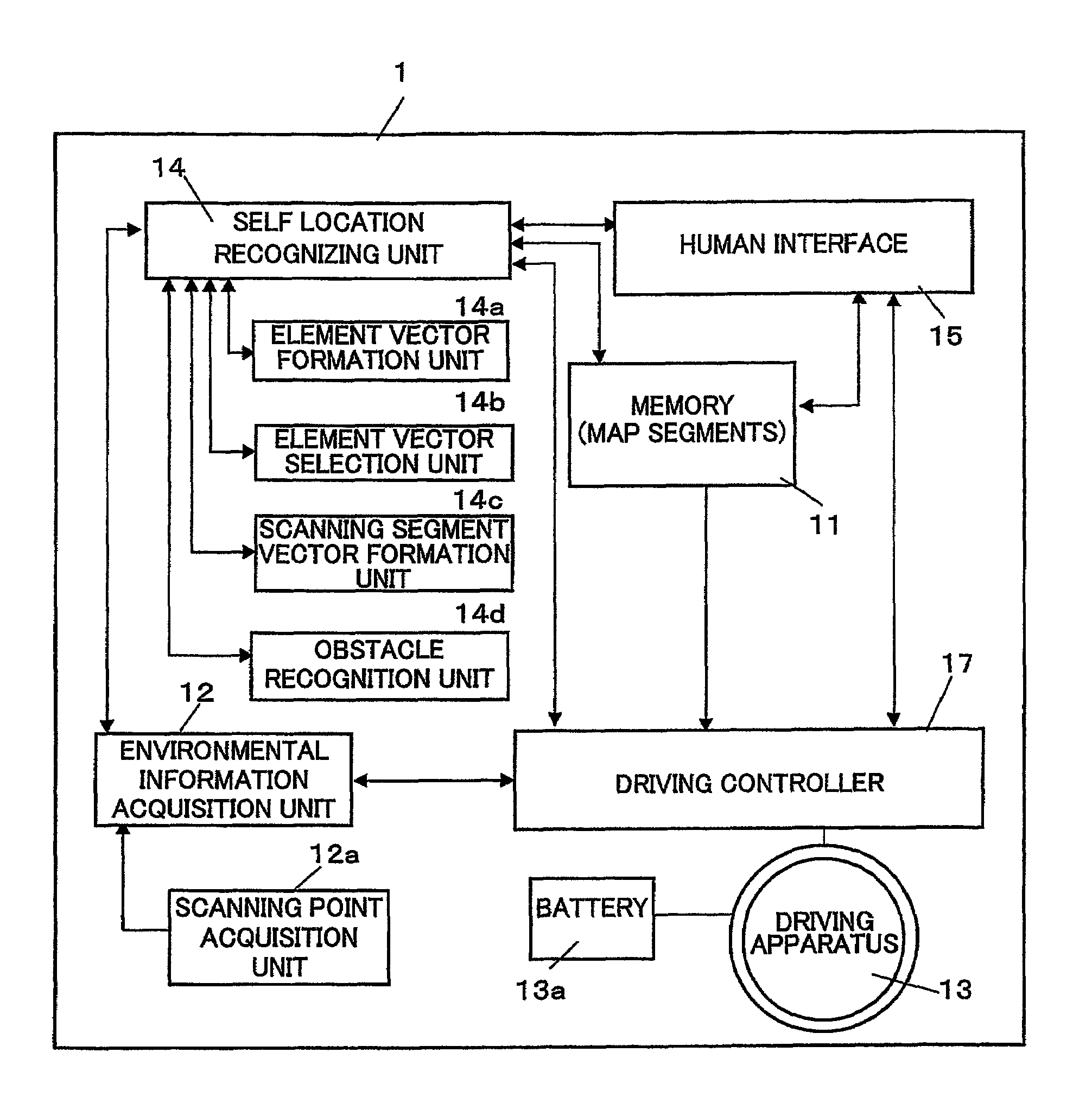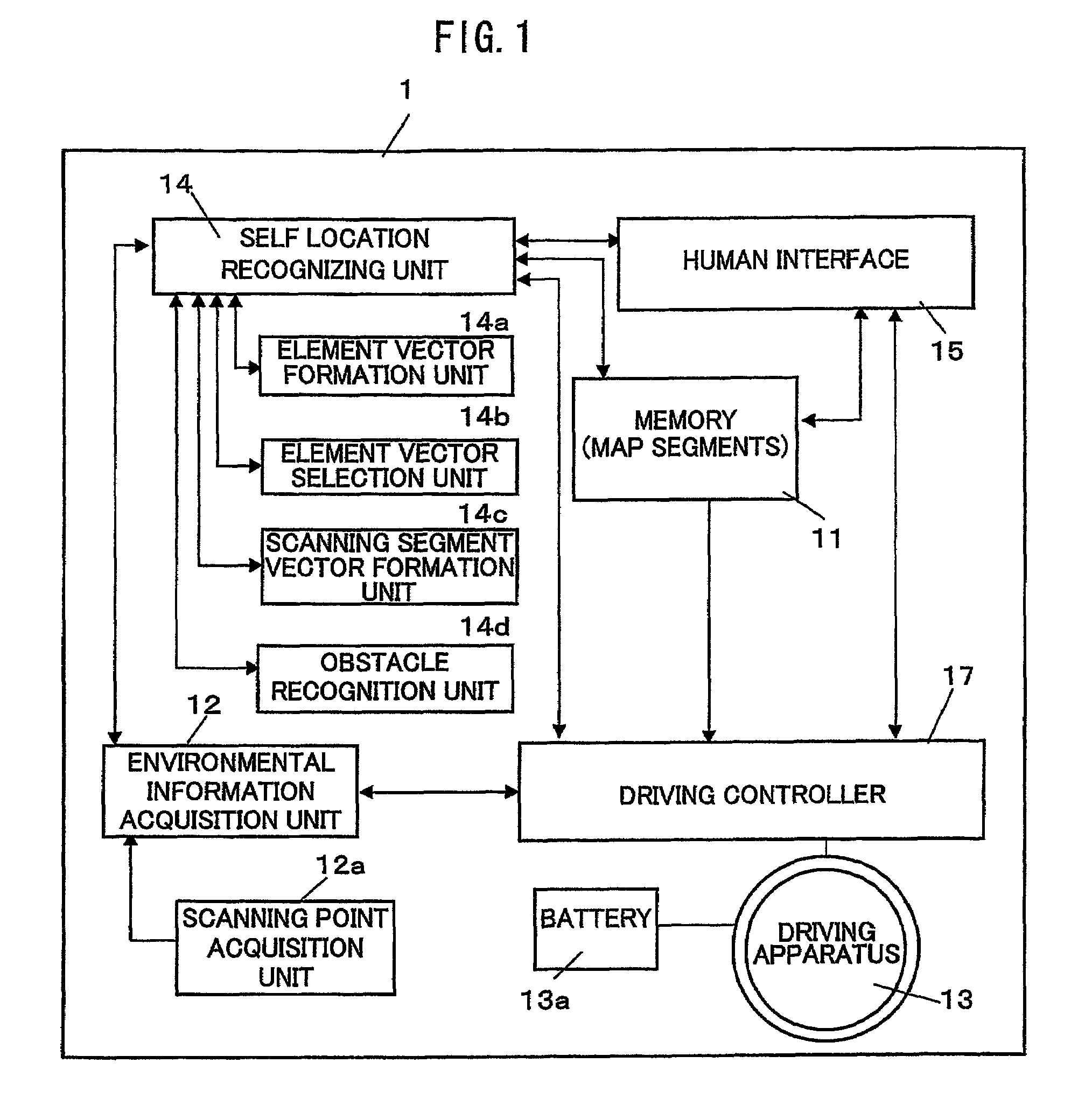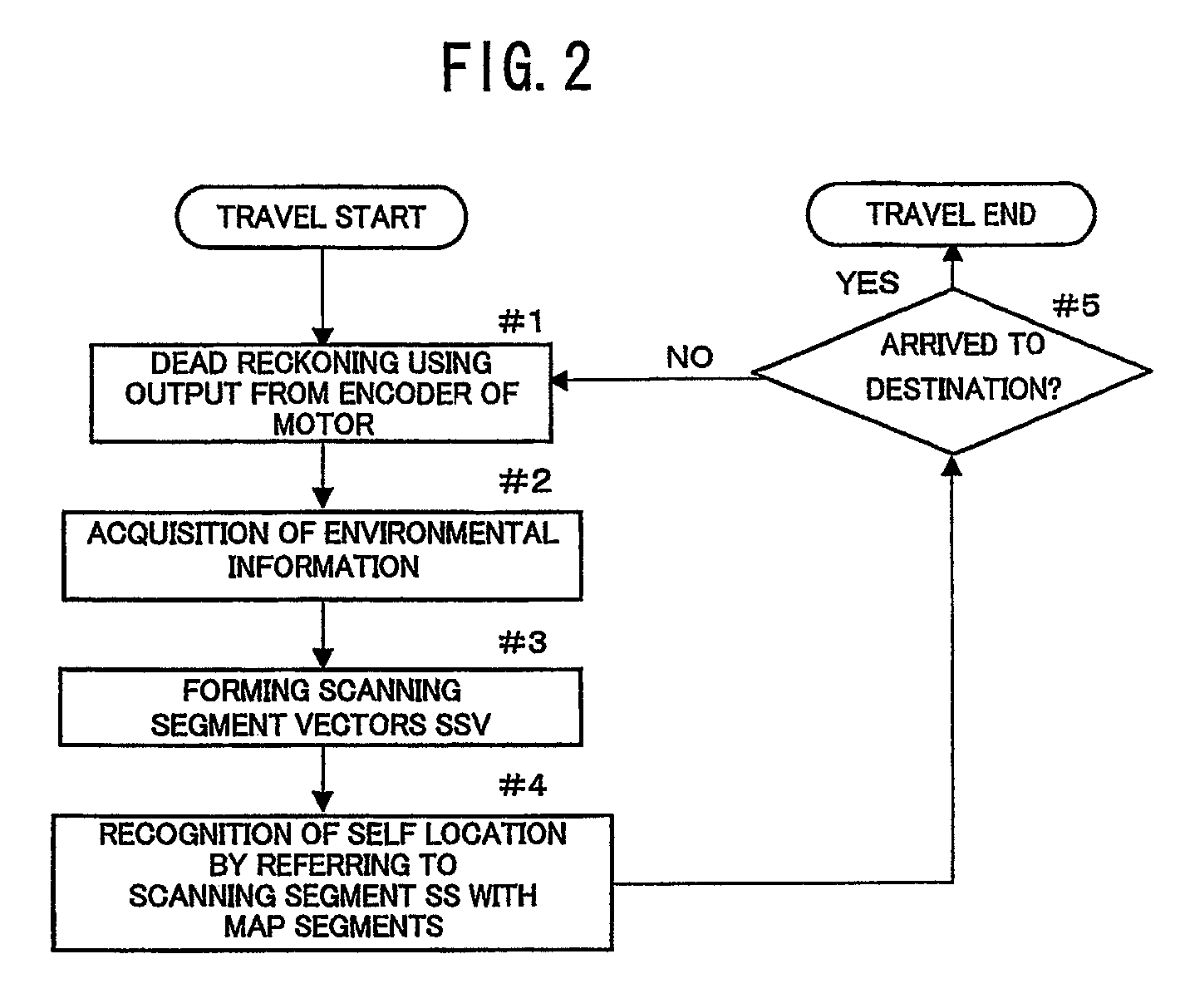Autonomous vehicle and planar obstacle recognition method
a technology of autonomous vehicles and planar obstacles, applied in the field of autonomous vehicles, can solve the problems of inability to recognize the planar obstacle having apertures, inaccurately, and complicated calculation process, and achieve the effect of increasing the moving speed of the autonomous vehicle, moving safely, and effective autonomous travel
- Summary
- Abstract
- Description
- Claims
- Application Information
AI Technical Summary
Benefits of technology
Problems solved by technology
Method used
Image
Examples
Embodiment Construction
[0043]An autonomous vehicle and a planar obstacle recognition method suitable for the autonomous vehicle in accordance with an embodiment of the present invention are described with reference to the figures. FIG. 1 shows a block constitution of the autonomous vehicle 1 of the present invention. The autonomous vehicle 1 is comprised of a memory 11 for memorizing map information of an operation area thereof and various parameters used for driving thereof, an environmental information acquisition unit 12 for acquiring environmental information used for recognizing location of an obstacle and self location, a driving apparatus 13 for driving the autonomous vehicle 1, a self location recognition unit 14 for recognizing the self location of the autonomous vehicle 1 by referring the environmental information acquired by the environmental information acquisition unit 12 with the map information memorized in the memory 11, a human interface 15 used for inputting a destination in the operatio...
PUM
 Login to View More
Login to View More Abstract
Description
Claims
Application Information
 Login to View More
Login to View More - R&D
- Intellectual Property
- Life Sciences
- Materials
- Tech Scout
- Unparalleled Data Quality
- Higher Quality Content
- 60% Fewer Hallucinations
Browse by: Latest US Patents, China's latest patents, Technical Efficacy Thesaurus, Application Domain, Technology Topic, Popular Technical Reports.
© 2025 PatSnap. All rights reserved.Legal|Privacy policy|Modern Slavery Act Transparency Statement|Sitemap|About US| Contact US: help@patsnap.com



